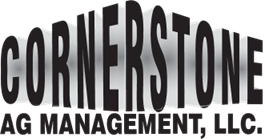5 Tips To Minimize Bird Damage
Amber Adams Progar embarked on a mission to assist dairy farmers in addressing the issue of pest birds. Now, after 8 years, there are five key takeaways that have emerged from her efforts:
“1. Collect bird count data… now
You need to know how big your pest bird problem is before you can develop a management plan. Bird numbers will most likely be the highest on your farm when the weather is cold because they seek warmth in the barns and a reliable source of food – your cattle feed. […]
2. Conduct a cost-benefit analysis for bird deterrence
Now it is time to estimate – to the best of your ability – how much damage pest birds are causing your farm. Feed loss is the easiest one to start with. […]
3. Watch out for bird-related pathogens
he amount of data we currently have linking cow health to pest birds is lacking, but what we do know is that Campylobacter jejuni is found in wild bird fecal matter. In fact, some studies reported that up to 50% of their bird fecal samples contained Campylobacter jejuni. This pathogen poses a health risk to you and your cattle. […]
4. Implement deterrence methods in the summer
Although the number of pest birds on your dairy likely peaks during the cold weather in winter, implementing bird deterrence methods during the summer is key to success. […]
5. Consider native raptors for deterrence
Using nature to combat pest birds on your farm has become one of the most effective deterrence methods I have seen on dairies. Take a look around your farm and observe whether you have any raptors around that may help you out. Hawks, eagles, falcons and owls are all birds of prey that might give your pest bird management a boost. Raptors will either attack or chase off most pest bird species. […]”
Read the full article by Amber Adams Progar with Progressive Dairy





